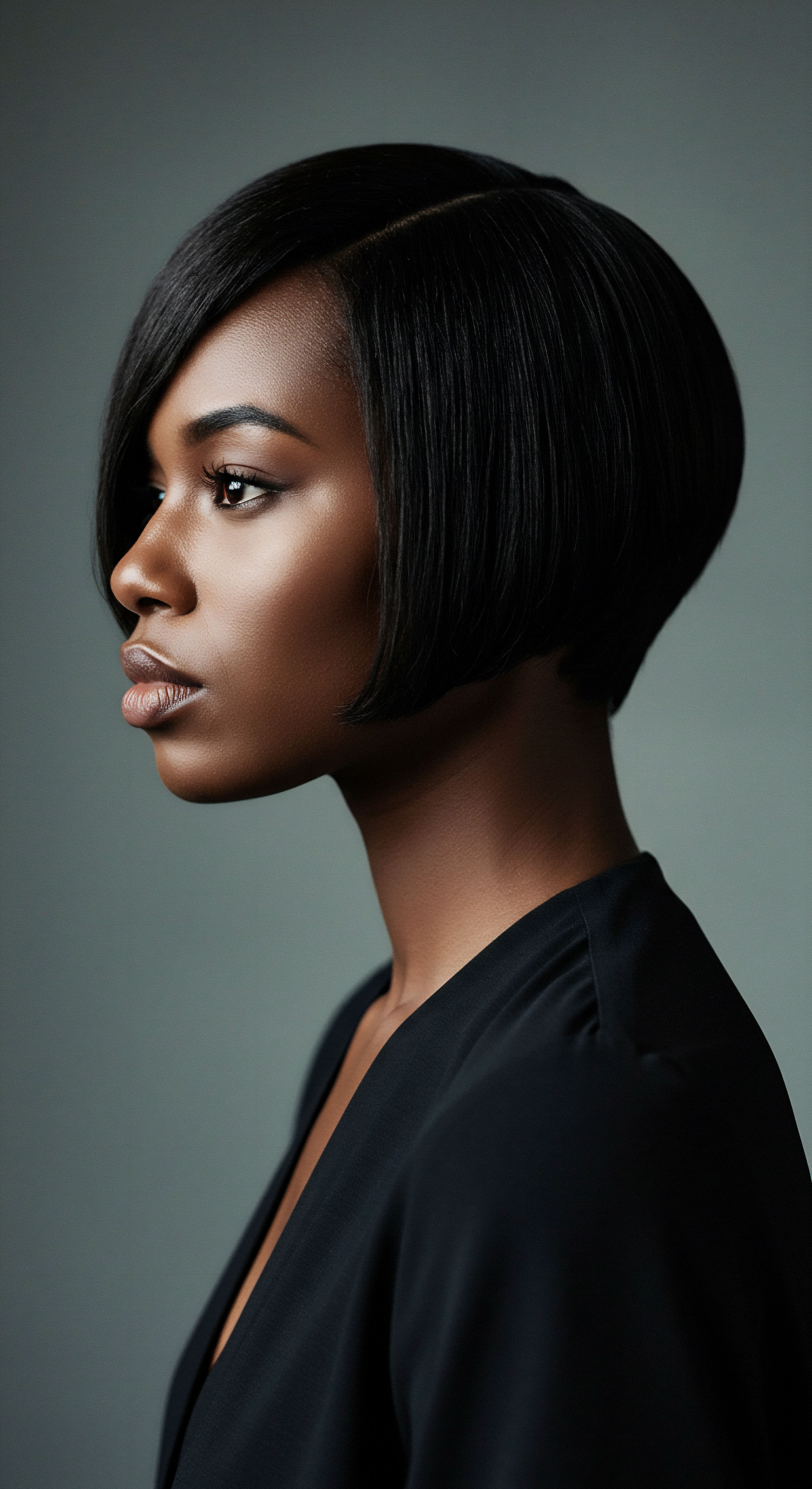
Roots
Consider the quiet strength held within each strand, a living echo of journeys taken long before our own. Our hair, particularly its rich, varied textures, carries not merely genetic code but also stories, whispered across generations, of how our ancestors understood and honored its very being. This ancient wisdom, often perceived as a collection of quaint practices, finds surprising resonance with the cutting-edge discoveries of modern science, unveiling a continuity that speaks to hair’s fundamental nature. The exploration begins at the very source, the elemental understanding of hair’s architecture and its profound connection to the earth’s offerings.
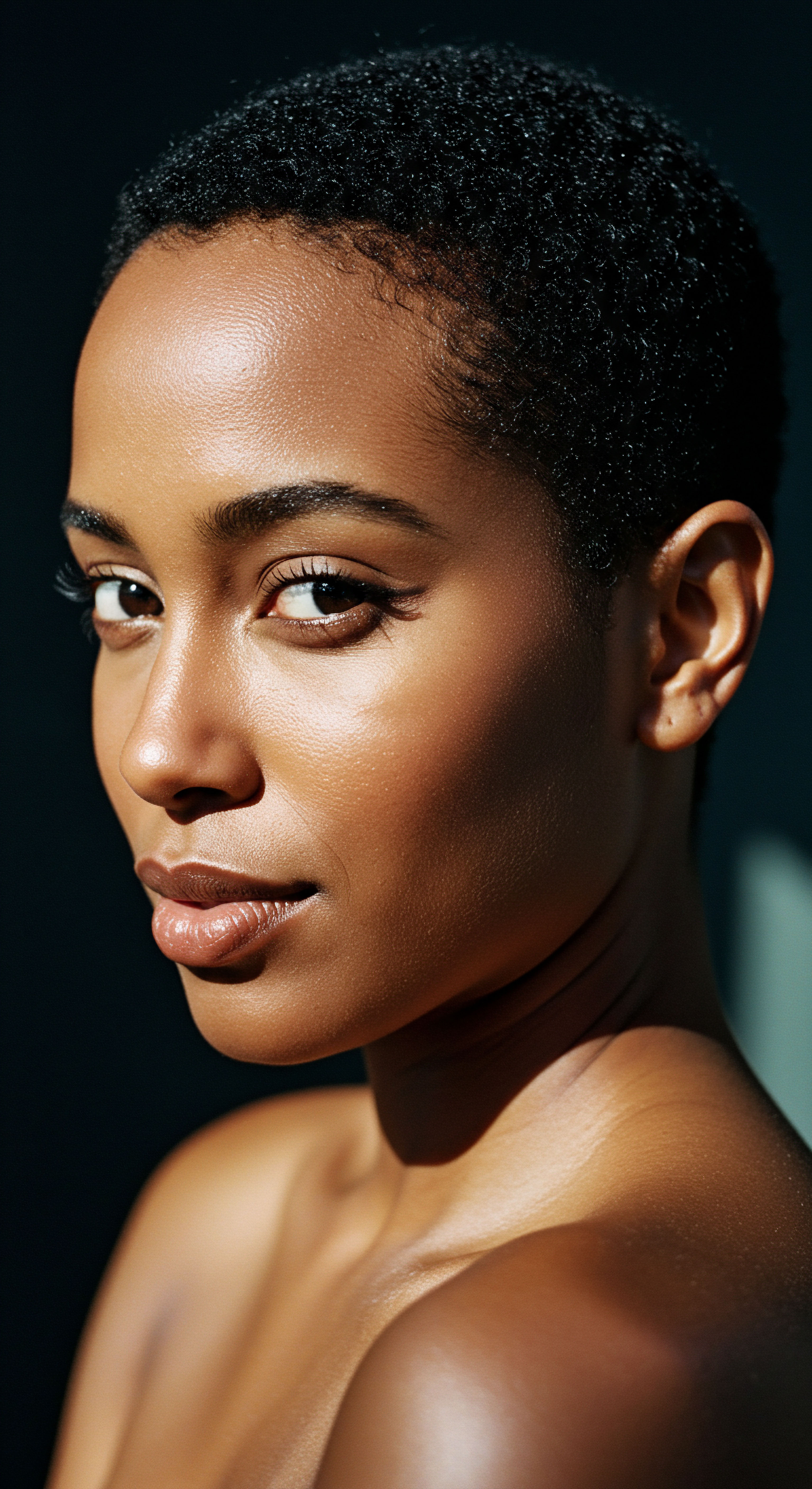
Hair’s Ancestral Blueprint
Long before microscopes revealed the intricate dance of keratin proteins and disulfide bonds, ancient cultures possessed an intuitive comprehension of hair’s resilience and vulnerability. They recognized that hair was more than adornment; it served as a shield, a statement, and a reflection of inner vitality. Modern science now quantifies what was once observed through generations of careful tending. The helical structures of keratin, the precise arrangements of the cuticle, and the varied porosity across different hair types – these are the scientific descriptions of what ancient hands learned to feel, to anticipate, and to protect.
For instance, the tightly coiled structure of textured hair, so celebrated in many cultures, presents a unique set of needs. Its natural bends mean more points where the cuticle can lift, leading to increased moisture loss and potential fragility. Ancient care practices, such as the application of rich oils and butters, implicitly addressed this very characteristic. They created a protective barrier, reducing the exposure of the hair’s inner cortex to environmental stressors, a concept now understood through the lens of lipid chemistry and protein preservation.

The Earth’s Bounty for Hair
From the earliest civilizations, the natural world provided a pharmacy for hair care. Clays from riverbeds, plant extracts from lush forests, and oils pressed from seeds formed the bedrock of ancient regimens. These ingredients were chosen for their observed effects ❉ the cleansing action of saponin-rich plants, the conditioning properties of plant oils, or the strengthening power of certain herbs.
- Clay ❉ Ancient Egyptians and Romans utilized mineral-rich clays for scalp cleansing and detoxification, drawing out impurities without stripping natural oils. Modern scientific analysis confirms clays possess adsorptive properties, effectively removing excess sebum and product buildup while delivering beneficial minerals.
- Plant Oils ❉ Across continents, oils like olive, coconut, and castor were staples. These lipid-rich elixirs provided shine, softness, and protection. Contemporary research into the molecular structure of these oils reveals their ability to penetrate the hair shaft, reducing protein loss and fortifying the hair from within. A 1999 study, for example, examined the effect of oil treatment on hair protein to combat combing damage, finding that coconut oil reduced the tendency of the hair cuticle to swell, thereby reducing protein loss.
- Herbal Infusions ❉ Ancient Indian and Chinese traditions employed herbs like Amla, Bhringraj, and Ginseng. These botanical powerhouses were believed to promote growth and scalp health. Today, phytochemical research identifies compounds within these herbs, such as antioxidants and flavonoids, that can indeed stimulate blood circulation to the scalp and shield hair follicles from oxidative stress.
The ancient understanding of hair’s needs, expressed through simple natural ingredients, remarkably foreshadows contemporary scientific insights into its molecular well-being.
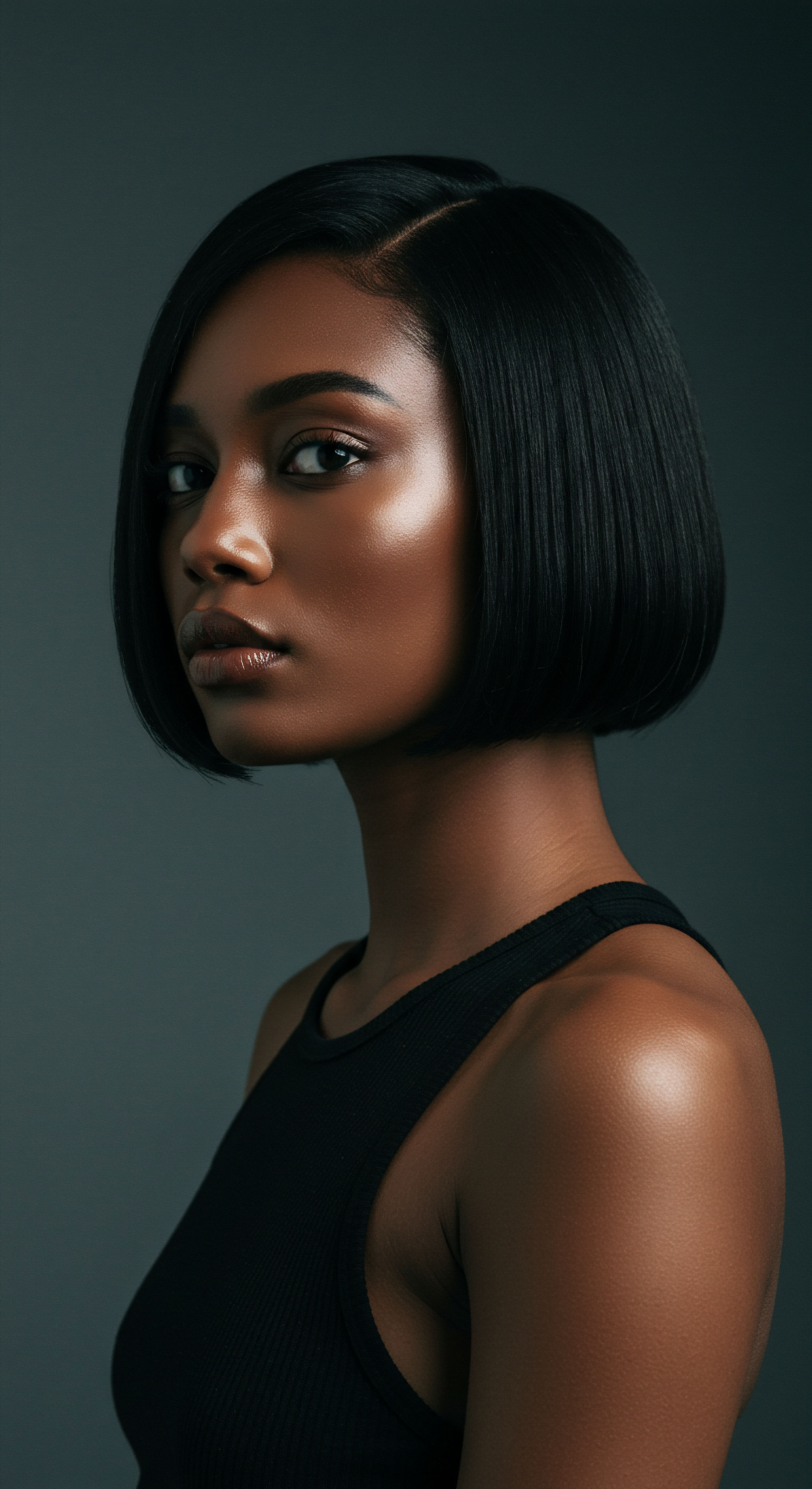
Scalp as a Garden
Ancient healers often viewed the scalp as fertile ground, requiring careful cultivation for healthy hair to flourish. Their practices emphasized scalp massage, herbal rinses, and gentle cleansing, intuitively grasping the importance of a balanced scalp environment. This holistic perspective finds a fascinating parallel in modern trichology’s focus on the scalp microbiome.
The scalp, much like the gut, hosts a delicate ecosystem of microorganisms. When this balance is disrupted, issues such as dandruff, irritation, or even hair thinning can arise. Traditional methods, though not framed in terms of microbial balance, often supported a healthy scalp by avoiding harsh chemicals and incorporating ingredients with natural antimicrobial or soothing properties. For instance, fermented ingredients, common in many ancient practices, introduce beneficial bacteria and organic acids that can positively influence the scalp’s microbial landscape, contributing to a thriving environment for hair growth.
The alignment here is clear ❉ whether through intentional herbal preparations or the simple act of regular, gentle scalp manipulation, ancient cultures nurtured the very foundation from which hair springs, recognizing its direct impact on the strands above.

Ritual
Stepping from the foundational knowledge of hair’s essence, we now move into the realm of daily rhythms and intentional actions. The question of how ancient hair care practices align with modern science truly takes on a tangible form when we consider the rituals, the repeated gestures, and the thoughtful applications that shaped ancestral beauty. This section seeks to illuminate how these practical, time-honored approaches resonate with contemporary understanding, offering not just echoes of the past but perhaps blueprints for our present and future hair care.
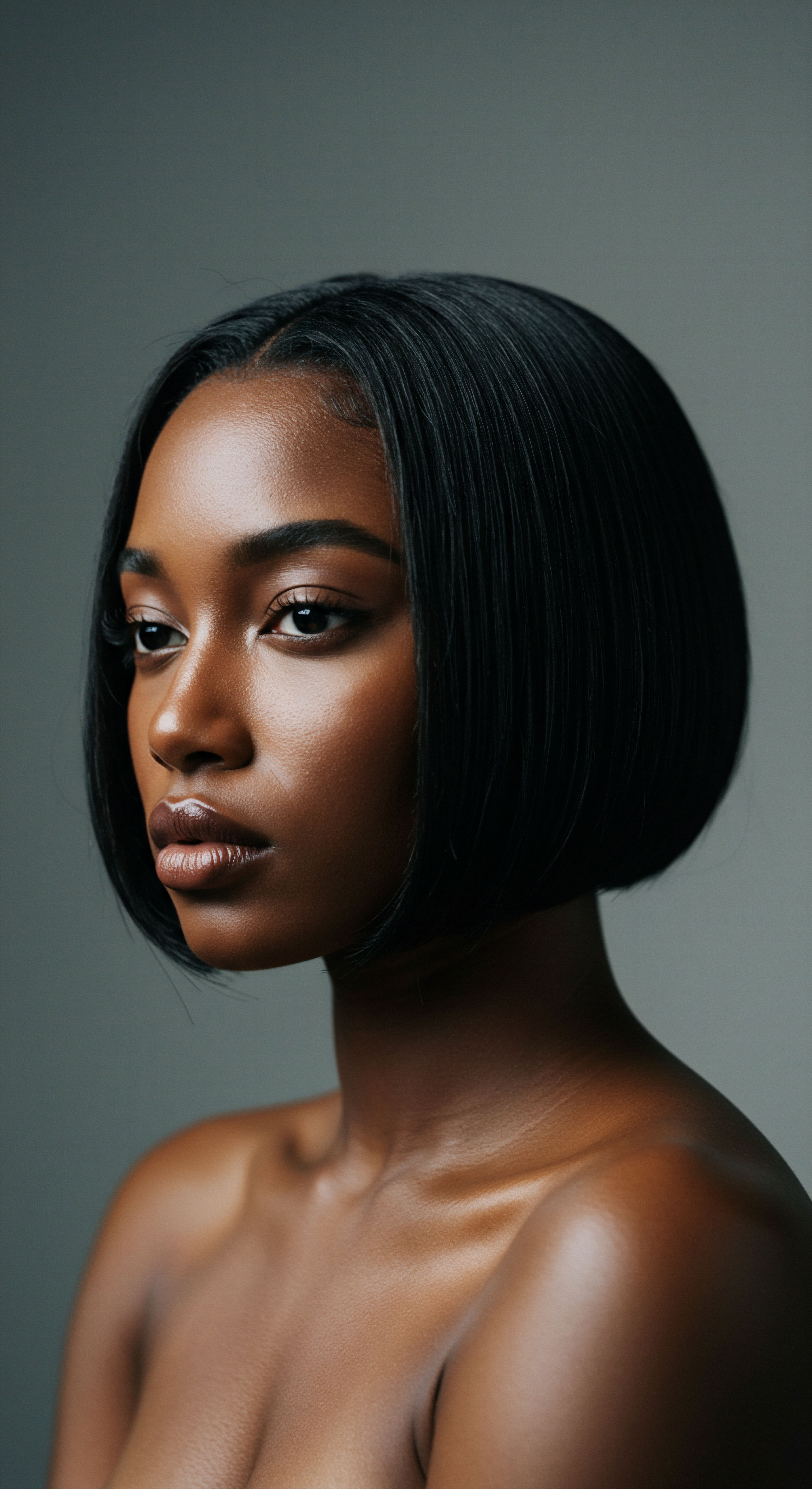
Cleansing Ceremonies
Before the advent of synthetic surfactants, ancient cultures relied on natural cleansers. These varied widely, from plant-derived saponins to mineral-rich clays and even fermented grains. The goal was consistent ❉ to purify the hair and scalp without stripping its vital moisture. Modern science now provides the granular detail on how these traditional methods achieved their efficacy.
Saponins, natural foaming agents found in plants like soap nuts (reetha) or shikakai, offer a gentle cleansing action. Unlike harsh modern sulfates that can aggressively remove lipids, saponins create a mild lather that lifts dirt and excess oil while preserving the hair’s natural barrier. This aligns with contemporary understanding of maintaining the hair’s delicate pH balance and preventing cuticle damage, which is paramount for textured hair that can be prone to dryness. A study on traditional Indian hair care highlights shikakai’s ability to act as a gentle cleanser that removes dirt and excess sebum without stripping natural oils, while also hydrating the hair and relieving dry, itchy scalp conditions.
Ancient Egyptians, for example, were known to use a paste made from natron (a naturally occurring mineral salt) and water for cleansing, sometimes incorporating scented oils. While seemingly abrasive, this method, when followed by rich oiling, would have provided a powerful purification while subsequent lubrication mitigated potential dryness, a principle echoed in modern pre-poo and co-washing practices designed to minimize shampoo’s stripping effects.

Nourishing Elixirs and Deep Treatments
The practice of anointing hair with oils, butters, and herbal infusions is perhaps the most universally recognized ancient hair ritual. From the elaborate oiling traditions of ancient India to the use of shea butter in West African communities, these practices were not merely cosmetic. They were deeply rooted in a profound understanding of hair’s need for replenishment and protection.
Modern trichology confirms the benefits of these emollients. Oils like coconut oil, rich in lauric acid, possess a unique ability to penetrate the hair shaft, reducing protein loss and fortifying the hair’s internal structure. Other oils, such as olive oil or argan oil, form a protective film on the hair’s surface, minimizing moisture evaporation and shielding strands from environmental damage.
Ancient deep conditioning treatments, often involving prolonged application of these nourishing mixtures, mirror modern hair masks and leave-in conditioners. The extended contact time allows for deeper penetration of beneficial compounds, promoting elasticity and reducing breakage.
Ancient daily routines, from cleansing with botanical compounds to saturating strands with oils, reflect an intuitive grasp of hair biology, echoing modern insights into cuticle integrity and moisture preservation.

Protective Artistry and Night’s Quiet Vigil
Beyond ingredients, ancient practices reveal a sophisticated understanding of hair manipulation and protection. Braiding, coiling, and wrapping were not only expressions of cultural identity and status but also highly effective protective styles. These techniques minimized daily handling, reduced tangling, and shielded hair from environmental aggressors, preventing mechanical stress and breakage.
This aligns perfectly with modern hair care recommendations for textured hair, where minimizing manipulation and opting for low-tension styles are cornerstones of healthy hair growth and length retention. The concept of reducing friction and external damage through styling is a timeless principle.
The wisdom extended to nighttime care as well. While specific historical accounts may be scarce, the general practice of covering hair at night, whether with wraps or bonnets, is a logical extension of daytime protective measures. This practice, often seen in various African and Asian traditions, serves to ❉
- Reduce Friction ❉ Sleeping directly on cotton pillowcases can cause friction, leading to frizz, tangles, and breakage, especially for delicate textured hair. Covering hair with silk or satin reduces this abrasive contact.
- Preserve Moisture ❉ Fabric like cotton can absorb moisture from hair, leaving it dry and brittle. Silk and satin, being less absorbent, help hair retain its natural hydration.
- Maintain Style ❉ Protective coverings help preserve styled hair, reducing the need for daily restyling, which further minimizes manipulation and heat exposure.
The meticulous care woven into these ancient rituals, from the selection of ingredients to the deliberate act of styling and protecting, demonstrates a deep, experiential knowledge that modern science now meticulously validates.

Relay
How do the intricate wisdoms of ancient hair care truly intersect with the precise findings of contemporary science? This question invites us to consider not just superficial resemblances, but the profound, often unexpected, convergences that illuminate a shared understanding of hair’s vitality. We move beyond simple correlation, delving into the biological, cultural, and even surprising mechanistic parallels that bind past and present approaches to hair wellness.
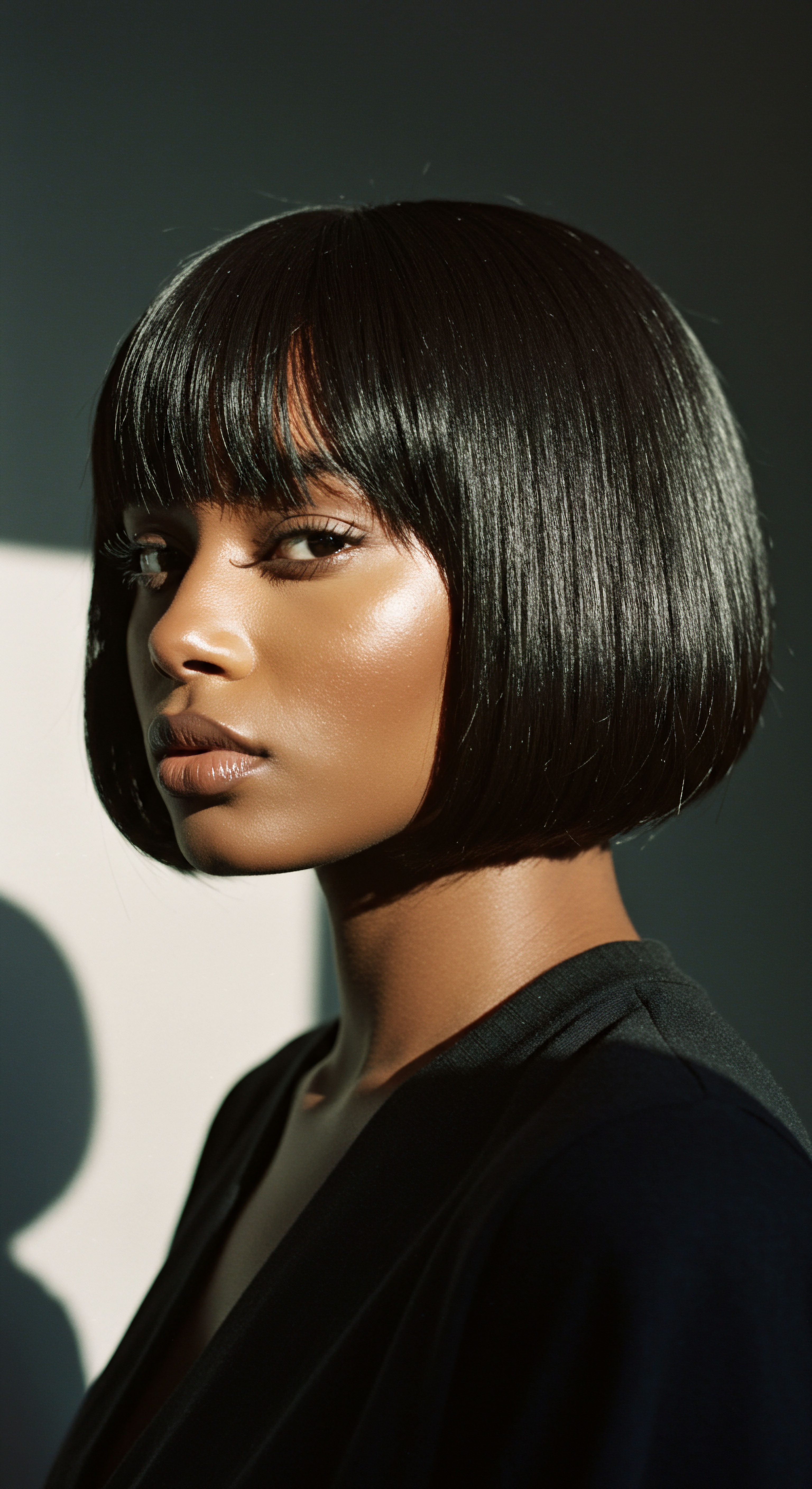
Beyond the Surface
Ancient practices often employed ingredients whose full biochemical impact was unknown at the time, yet their observed benefits were undeniable. Modern analytical chemistry now allows us to dissect these traditional compounds, revealing their active constituents and the mechanisms through which they influence hair biology.
Consider the widespread use of Fermented Rice Water, a staple in East Asian hair care traditions, particularly among the Yao women of Huangluo village in China, renowned for their exceptionally long hair. While ancient practitioners simply observed its effects on hair length and strength, modern science has identified key components. A 2010 study published in the International Journal of Cosmetic Science revealed that fermented rice water significantly improved hair elasticity, reduced surface friction, and minimized frizz.
This effect is largely attributed to Inositol, a carbohydrate that remains in the hair even after rinsing, offering internal repair and protection. Further research points to the presence of amino acids, B vitamins, and antioxidants in fermented rice water, all contributing to hair shaft fortification and reduced breakage.
Another compelling example is Amla (Indian Gooseberry), a cornerstone of Ayurvedic hair care. For centuries, it has been lauded for promoting hair growth, preventing premature graying, and treating scalp conditions. Contemporary research supports these traditional claims ❉ Amla is rich in Vitamin C, polyphenols, and other antioxidants. A 2012 study, for instance, found that Amla oil acted as a powerful inhibitor of 5-alpha reductase, an enzyme implicated in androgenetic alopecia.
This aligns its traditional use with modern pharmacological targets for hair loss. A 2011 study in the Journal of Ethnopharmacology further supported Amla’s ability to enhance hair growth by improving follicular health and combating oxidative damage. These findings underscore a sophisticated, albeit empirically derived, understanding of biological pathways in ancient healing systems.

Hair as a Cultural Chronicle
Beyond biochemistry, hair practices have always held profound cultural significance. In ancient societies, hair styles, adornments, and care rituals often conveyed social status, marital status, age, and even religious affiliation. The elaborate wigs of ancient Egypt, for instance, were not merely fashion statements; they were symbols of wealth, cleanliness, and protection from the harsh sun. The meticulous styling and preservation of these wigs, sometimes even on mummified remains, reveal a deep societal value placed on hair.
Chemical analysis of ancient Egyptian mummies has shown the application of fatty materials, akin to modern hair gel, to style and preserve hair, demonstrating a sophisticated understanding of hair fixation and longevity. This deliberate preservation speaks to the enduring human desire for self-expression and identity through hair, a sentiment that resonates powerfully today, particularly within textured hair communities.
This echoes in the contemporary context of textured hair, where hair practices are deeply intertwined with identity, heritage, and self-acceptance. The conscious choice to wear natural styles, to engage in specific cleansing and moisturizing regimens, or to use protective styles carries a weight far beyond mere aesthetics. It is a connection to ancestral lineage, a statement of resilience, and a celebration of unique beauty. The modern movement towards embracing natural textured hair can be seen as a continuation of these ancient cultural narratives, now informed by scientific understanding of hair’s unique structural and care requirements.
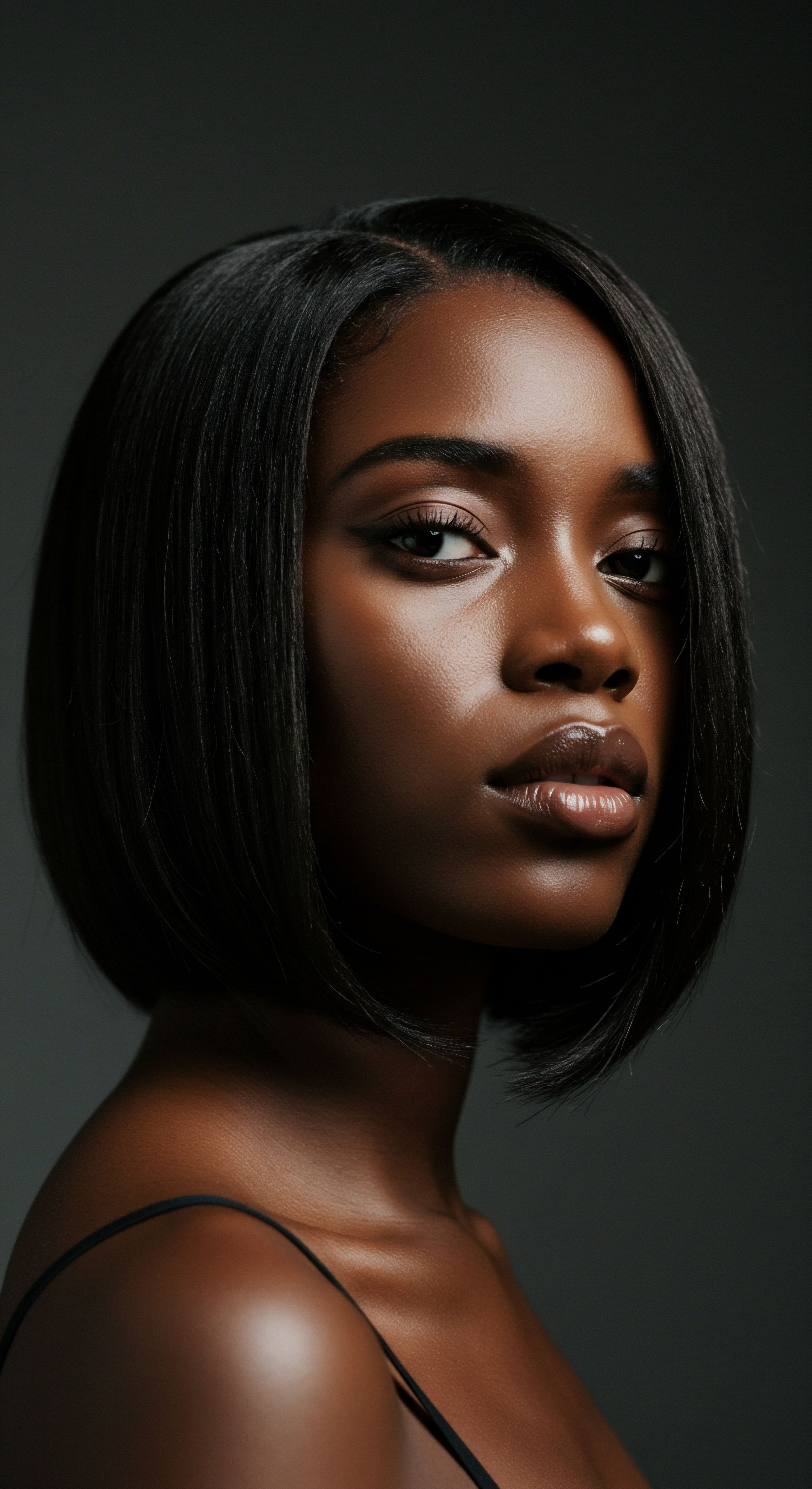
Does Traditional Scalp Oiling Impact the Microbiome?
The ancient practice of regular scalp oiling, prevalent in Ayurvedic and other traditional systems, was believed to nourish the scalp and promote hair growth. While the primary mechanism was thought to be lubrication and improved circulation, modern science opens a new lens ❉ the scalp microbiome. The scalp, like the gut and skin, harbors a diverse community of microorganisms. A balanced microbiome is essential for scalp health, influencing everything from sebum production to inflammation.
Recent studies are beginning to explore how traditional oiling practices might influence this microbial ecosystem. For example, coconut oil, a widely used traditional hair oil, has been shown to possess antimicrobial properties against certain fungi and bacteria, which could contribute to a healthier scalp environment by managing common issues like dandruff (often linked to an overgrowth of Malassezia fungus). While direct, large-scale human studies specifically linking traditional oiling practices to significant, long-term shifts in the scalp microbiome are still emerging, the theoretical alignment is compelling. The gentle massage associated with oiling also enhances blood flow, potentially delivering more nutrients to hair follicles and supporting a balanced microbial environment indirectly.
This intersection highlights a profound convergence ❉ ancient methods, rooted in observation and generations of practice, inadvertently supported complex biological systems that modern science is only now beginning to fully unravel. The efficacy of these time-honored approaches often lies in their holistic nature, addressing multiple factors that contribute to hair health, even if the underlying mechanisms were not explicitly articulated in scientific terms.
The empirical successes of ancient hair care, from fermented rinses to protective styling, are increasingly validated by modern scientific inquiry, revealing sophisticated biochemical and biomechanical alignments.
| Aspect of Care Cleansing |
| Ancient Practice Plant saponins, natural clays, ash lye |
| Modern Scientific Alignment Gentle surfactants, pH-balanced formulas, chelating agents for mineral removal. |
| Aspect of Care Conditioning |
| Ancient Practice Rich plant oils (coconut, olive, amla), butters (shea) |
| Modern Scientific Alignment Emollients, humectants, protein treatments, lipid-rich conditioners that penetrate hair shaft. |
| Aspect of Care Protective Styling |
| Ancient Practice Braids, twists, wraps, hair covers |
| Modern Scientific Alignment Low-manipulation styles, reduced tension, moisture retention, friction minimization with silk/satin. |
| Aspect of Care Scalp Health |
| Ancient Practice Herbal infusions, scalp massage, fermented preparations |
| Modern Scientific Alignment Microbiome balance, anti-inflammatory agents, blood circulation stimulation, targeted anti-fungal/bacterial treatments. |
| Aspect of Care This table illustrates the parallels between traditional hair care methods and their scientific explanations. |
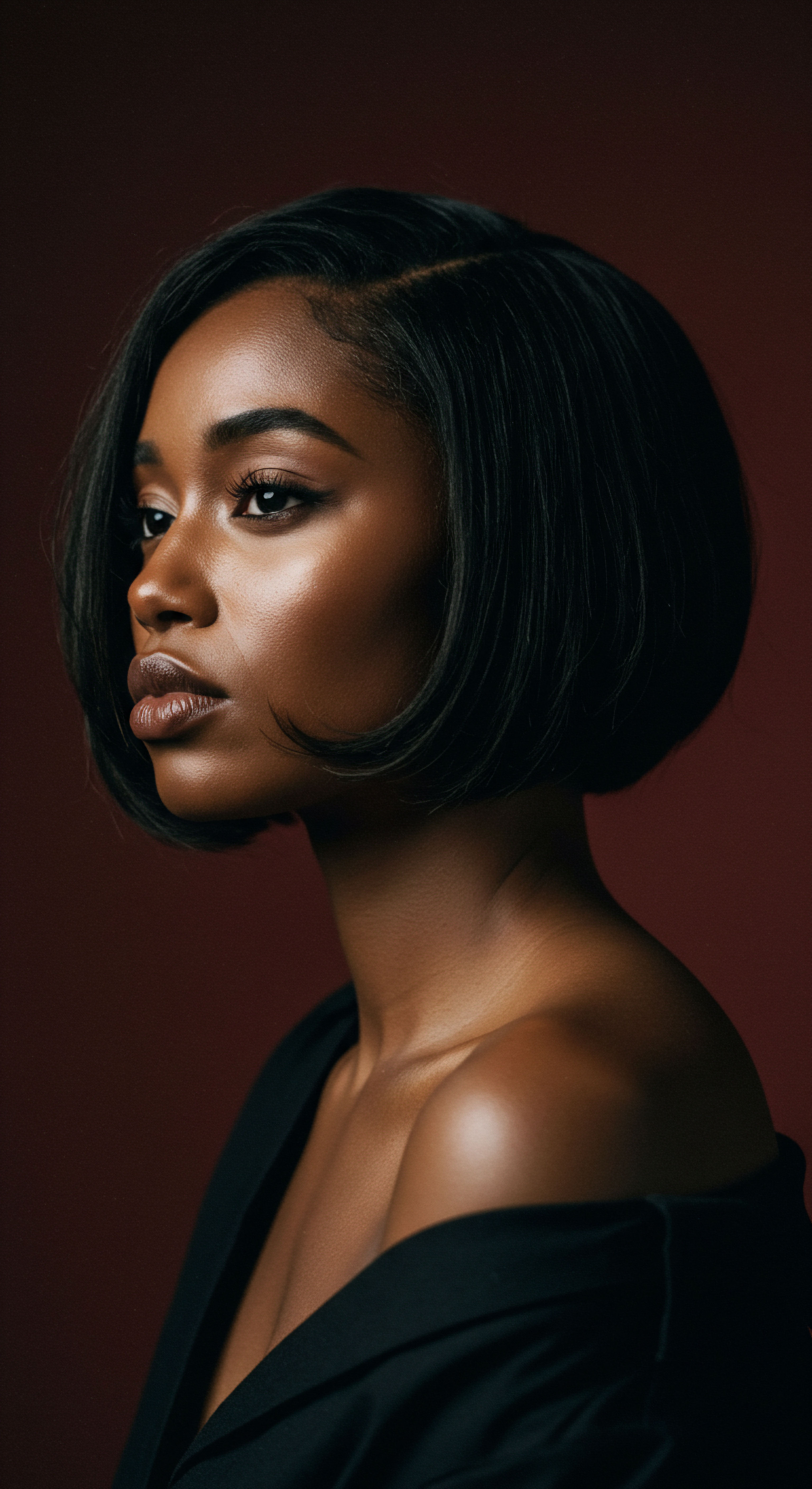
Reflection
As we step back from this exploration, a gentle truth settles ❉ the journey of hair care, from the earliest human expressions to our contemporary quests for vibrant strands, forms a continuous, flowing river of wisdom. Ancient practices, born of deep observation and an intimate relationship with the natural world, do not merely coexist with modern science; they often serve as its quiet, powerful predecessors. The scientific validation of time-honored methods like fermented rice water or Amla oil does not diminish their ancestral origins; rather, it elevates them, offering a profound appreciation for the ingenuity and discernment of those who came before us.
Our textured hair, with its unique stories and needs, stands as a living testament to this enduring connection. The protective styles, the nourishing oils, the mindful cleansing – these are not relics of a bygone era, but rather living traditions, now enriched by the precise language of biochemistry and the microscopic lens of modern inquiry. This understanding encourages us to approach our hair not as a problem to be solved by the latest product, but as a cherished part of ourselves, deserving of care that honors both ancient echoes and present-day revelations. The dialogue between old and new invites us to cultivate a hair regimen that is deeply personal, scientifically informed, and beautifully rooted in the wisdom of the ages.

References
- Medical News Today. Amla oil ❉ Does it really work for hair growth? 2018.
- Khatri, Amelia. Roots of Haircare. Publifye, 2025.
- Grice EA, Segre JA. The skin microbiome. Nature Reviews Microbiology, 2011.
- Healthline. Amla Powder for Hair Health ❉ Growth and Other Benefits, Side Effects. 2018.
- Verywell Health. Amla Oil Benefits and Uses. 2025.
- Li, Xiaoli, et al. Data mining on varieties, therapeutic uses and medicinal characteristics of Traditional Chinese Medicine preparations for treating hair loss. Tropical Journal of Pharmaceutical Research, 2020.
- International Journal of Cosmetic Science. Fermented rice water as a hair treatment ❉ A 2010 study. 2010.
- OnlyMyHealth. Amla For Hair ❉ Understanding Benefits And How To Use It. 2025.
- Times of India. Amla for hair ❉ Can Amla actually turn your grey hair into black? 2024.
- Harlow, Mary. A Cultural History of Hair in Antiquity (The Cultural Histories Series). Bloomsbury Academic, 2021.
- Agri Articles. Fermented Rice Water ❉ A Natural Elixir for Beauty and Health. 2023.
- Shasha, Shiran. A History of Haircare. Amazingy Magazine, 2024.
- BuyCosmetics.CY. Onion Hair Mask Myths and Facts ❉ Does It Really Boost Hair Growth? 2025.
- Korean Cosmetics in Cyprus. Honey Hair Masks ❉ The Surprising Benefits for Your Hair. 2025.
- I tried my grandmother’s egg yolk hair mask after winter damage (my hair grew 30% shinier in 7 days). 2025.
- Khatri, Amelia. Roots of Haircare eBook. Rakuten Kobo United States, 2025.
- Khatri, Amelia. Roots of Haircare. Google Books, 2025.
- Journal of Emerging Technologies and Innovative Research. Effect of Fermented Rice Water on Hair. 2023.
- International Journal of Trichology. Hair Growth Activity of Three Plants of the Polynesian Cosmetopoeia and Their Regulatory Effect on Dermal Papilla Cells. 2022.
- Journal of Archaeological Science. Ancient Egyptian hair gel ❉ New insight into ancient Egyptian mummification procedures through chemical analysis. 2011.
- Taylor & Francis Online. A possible solution for hair loss by inhibiting corticotropin-releasing factor (CRF) receptor from traditional Chinese medicine. 2022.
- MDPI. Role and Mechanisms of Phytochemicals in Hair Growth and Health. 2022.
- Journal of Drug Delivery and Therapeutics. Formulation and Evaluation of Fermented Rice Water Herbal Shampoo. 2021.
- RJPN. Evolution And Formulation From Harbal Rice Water Conditioner. 2022.
- Ethnobotany Research and Applications. Ethnobotanical Survey of Medicinal Plants used in the Treatment and Care of Hair in Karia ba Mohamed (Northern Morocco). 2022.
- PMC. Traditional Chinese Medicine Treatment for Androgenetic Alopecia Based on Animal Experiments ❉ A Systematic Review and Meta-Analysis. 2022.
- Newsweek. Everything You Need To Know About The Ancient Art Of Hair Oiling. 2022.
- ResearchGate. Ethnobotanical and Pharmacological Importance of the Herbal Plants With Anti-Hair Fall and Hair Growth Activities. 2009.
- Mayway Herbs. Hair loss and Traditional Chinese Medicine. 2024.
- Frontiers. Efficacy of Acupuncture and Moxibustion in Alopecia ❉ A Narrative Review. 2022.
- Zandu Care. Hair Oiling Benefits, How to Apply & Which Oil to Choose. 2023.
- Sequential. Crazy for Coconut ❉ Can Hair Oiling Transform Your Scalp Microbiome? 2024.
- ResearchGate. Hair care practices and structural evaluation of scalp and hair shaft parameters in African American and Caucasian women. 2019.
- PubMed. Hair Oils ❉ Indigenous Knowledge Revisited. 2022.
- FORMULATION AND EVALUATION OF RICE WATER HAIR MASK. 2024.
- Botanical Medicinal Oils for Hair Care and Scalp Health. 2024.
- Effect of mechanical intervention on the scalp microbiome ❉ setting. 2024.
- Pharmacia. Antifungal activity and hair growth stimulation of purple sweet potato leaf fraction (Ipomoea batatas (L.) Lamk) and its molecular mechanism through androgen receptor inhibition. 2024.
- A review on activity of herbal hair mask on hair fall. 2024.
- Femina Flaunt. Ancient Indian Hair Care That Works Wonders. 2024.
- The Ancient Science of Rice Water ❉ Why Hairstylists Are. 2024.
- MDPI. Afro-Ethnic Hairstyling Trends, Risks, and Recommendations. 2022.
- Roshni Botanicals. The Ancient Power of HerbOcean Hair Oil for Healthy Hair. 2025.
- Indian Journal of Dermatology, Venereology and Leprology. Hair cosmetics. 2015.
- Egyptian Journal of Chemistry. 2024.
- PMC. Microscopic Characteristics Of Scalp Hair Subjected To Cultural Styling Methods In Ghanaian African Females. 2019.
- Journal of Archaeological Science. Ancient Egyptian hair gel ❉ New insight into ancient Egyptian mummification procedures through chemical analysis. 2011.
- International Journal of Tourism and Hospitality Management. Role of the hair in ancient Egypt. 2018.
- ResearchGate. Ancient Egyptian hair gel ❉ New insight into ancient Egyptian mummification procedures through chemical analysis. 2011.
- MDPI. Human Hair and the Impact of Cosmetic Procedures ❉ A Review on Cleansing and Shape-Modulating Cosmetics. 2021.